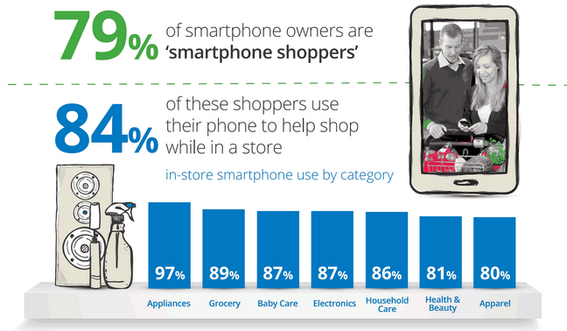Online stores need shoppers and getting more potential customers to visit an online retailer’s site is an important part of ecommerce marketing.
Many Internet merchants rely primarily on search engine optimization to drive traffic — and spend a lot of time focused on good title tags. This is important, but there are also some effective ways to get additional site traffic that may also help you build your brand reputation and create lasting relationships with customers.
1. Offer Something Useful, Free
In addition to having lots of great products for shoppers to choose from, an ecommerce marketer can generate a significant amount of site traffic simply offering useful and free resources.
Consider the case of Columbia Sportswear’s “What Knot to do in the Greater Outdoors” iPhone and iPad app. The free mobile application gives examples of about 70 different and useful knots organized and illustrated so that they are both easy to locate and learn.
Columbia’s mobile app can lead to more traffic.
Columbia doesn’t even sell rope, according marketer Jay Baer who spoke about the knot-tying app in a recent podcast interview. Baer, who is the author of a new book about useful marketing called Youtility, points out that this useful app endears Columbia to shoppers so that when it is time to visit a retailer’s site, Columbia is likely the site they will visit.
“If you create something that somebody would pay for, but you give it away, not only are you building trust and a debt of gratitude buy you shock them into sharing it,” said Joe Chernov, vice president of marketing at development company Kinvey, who was quoted in Baer’s book.
“They share not only the asset itself, which is inherently valuable to the brand, but they share the fact that they are surprised that a brand would just give it to them and not try to sell them along the way.”
These free and useful resources can become an excellent source of new site traffic.
2. Buy Pay-Per-Click Advertising
Pay-per-click advertising has long been a traffic-driving staple in ecommerce marketing. You buy ads on Google or Bing, pay only when a shopper clicks, and generate predictable amounts of traffic that can and will result in predictable numbers of additional sales.
PPC is growing well beyond a simple text ad displayed on a search engine results page, and creating new opportunities for savvy ecommerce marketers to generate a lot of additional site traffic.
First, there are more places — networks on which — to purchase and place PPC advertising. Consider placing ads on Twitter, Facebook, or YouTube as examples.
Next, you can offer PPC ads on mobile devices. Smartphones and tablets are changing the way that people shop. Some 79 percent of smartphone owners are also “smartphone shoppers,” according to a May 2013 report from the Google Shopper Marketing Agency Council and M/A/R/C Research.
Mobile-focused PPC ads could attract shoppers when they’re looking to buy.
That report states that 84 percent of shoppers use mobile devices inside of brick-and-mortar stores to help them make good buying decisions. And some 82 percent of those mobile shoppers will use a search engine to look for product information. A mobile PPC ad might create additional site traffic and revenue.
3. Host a Social Contest
Social media is an effective tool for encouraging customer engagement and potentially sending traffic to a store’s website.
As an example, last year, handbag retailer Vera Bradley ran a contest on Instagram, asking shoppers to submit images holding Vera Bradley products. As marketer Lee Odden pointed out, Vera Bradley made it very easy for shoppers to enter, simply use a social network they were already used to — Instagram — and include a hashtag, #VBStyleShare. The contest had hundreds of entries and drove traffic to the retailer’s site and blog.
Social media contests generate traffic first as shoppers enter and second —long term — as shoppers pay more attention to your marketing.
4. Buy Traditional Advertising
Perhaps the most controversial suggestion on this list is the idea that traditional advertising in magazines, on radio stations, via direct mail marketing, or even on billboards can all help to drive traffic to your website.
Leading online retailers like Zappos, Amazon, Diapers.com, and Bonobos, are all examples on pure-play ecommerce businesses that use traditional advertising to help generate visits and sales.
I’m familiar with an online retailer in the west that generated more than 400 sales from a direct mail piece sent to about 10,000 households.
5. Create Entertaining Content
Entertainment is also a great way to encourage site traffic. Online retailers can publish interesting and entertaining content that attracts new site visitors.
An excellent and recent example of entertainment marketing comes from European mobile network provider O2. The company is trying to encourage potential customers, telling them what a great time we live in, especially, where technology is concerned. The result is a viral video, “Be a Bit More Dog,” that sent thousands of viewers to the company’s Be More Dog website.
Another example of great entertainment marketing can be found on the Blendtec YouTube channel, “Will it Blend.” The company has produced more than 100 videos featuring its blenders.


